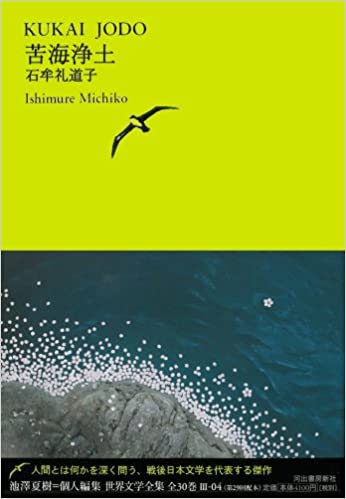The first meeting of the Michiko Ishimure reading group was held at 3 p.m. on July 22, 2020. This project was planned by Mizuki Uno (The University of Tokyo) and Hanako Takayama (The University of Tokyo), who both belong to the EAA World Literature Unit. Ching-Yuen Cheung (The University of Tokyo), Masahisa Suzuki (The University of Tokyo), Shiho Maeshima (The University of Tokyo), Yusuke Yamada (Daito Bunka University), Akihiro Miyata (The University of Tokyo), and Ryohei Tatebe (The University of Tokyo) participated in the initial session.
How have people encountered, considered, and experienced past pandemics? We asked ourselves this simple question. During the current Covid-19 pandemic Mizuki, who specializes in Japanese and Chinese classical literature, especially the representation culture of setsuwa, became interested in the five disasters described in Hōjōki, and proposed the idea of reading disaster literature from various countries and cultures. As we discussed the way to conduct our reading group, what came to mind were the works of Michiko Ishimure. If we read her writings, including Kugai Jodo, Paradise in the Sea of Sorrow, which focuses on Minamata disease, and find connections to the interests of each of the participants, could this act as a way to gain insight into today’s disasters or the current epidemic? Recently, Ishimure’s works have gained attention as an important part of world literature. Furthermore, in rare archives, including interviews, we see notable aspects of her personality, such as her interest in imayo and her writing Kumamoto dialect as poetry. We thought that analyzing her broad literary work, which includes lyrics and the scripts for Shiranui, a Noh play, would be also a good occasion to reconsider the meaning of contemporary world literature.

Based on this concept, after having completed the initial meeting, Mizuki gave a presentation in this first reading group. She also chose the following supplemental articles.
・Yusuke Yamada, The Rhetoric of Repetition: Kaho Nashiki and Michiko Ishimure, Suisei-sha, 2018, Chapter 4, “The Repetition of Michiko Ishimure”.
・Haruo Shirane, Japan and the Culture of the Four Seasons: Nature, and the Arts, Columbia University Press, 2012.
Referring to these two texts, she carefully analyzed how communication is described in the first part of Kugai Jodo and how nature and Buddhist motifs are used. Yusuke provided additional details about his own book, and we discussed communication with non-human beings and the characteristics of Ishimure’s kikigaki at length. During the course of our discussion some important questions were raised. How can we repeat Ishimure’s words? Wouldn’t our ability to repeat these words be a crucial point? Isn’t it difficult to simply connect Minamata disease with a disaster or epidemic? Thus, we have launched this reading group as part of our continual quest to explore new horizons.
Reported by Hanako Takayama (EAA Project Assistant Professor)








